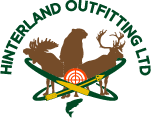Buying Out Indigenous Atlantic Salmon Fishermen. Will it Work?
Back to BlogIn May of 2018 the Atlantic Salmon Federation reached an agreement with Greenland and Faroe Islands fishermen to stop commercial fishing of Atlantic salmon in another attempt at putting the brakes on a rapidly dwindling resource. Salmon from more than 2,000 of the world’s river systems converge on Greenland and Faroe Islands waters as part of their annual migration. That area on the west coast of Greenland is particularly important to conserve because it's a "mixed-stock" fishery, which means salmon from both sides of the Atlantic Ocean gather over the winter to feed there. The average lifespan of salmon is five years, so two generations of fish will be protected. Mature salmon that would otherwise be fished in those feeding grounds will begin returning to their home rivers in the spring of 2019.
"It's a huge win for wild Atlantic salmon, particularly in Canada," said Bill Taylor, the president of the Atlantic Salmon Federation. "In a given year 75 or 80 per cent of salmon caught in Greenland are of Canadian origin."
The 12-year Greenland Salmon Conservation Agreement was announced on May 28th, 2018 in partnership with the North Atlantic Salmon Fund in Iceland. The two conservation organizations and the Association of Fishers and Hunters in Greenland finalized the deal May 24th in Reykjavik, Iceland.
Greenland and the Faroe Islands, an archipelago halfway between Iceland and Scotland, are both autonomous nations under Denmark. On the Faroe Islands side, the salmon deal first came into being in 1992, but the recently signed agreement now has it renewed for another 12 years.
The chair of the fund in Iceland, described the Greenland deal as buying the commercial fishing rights from the many small, mostly Indigenous, fishing communities along Greenland's west coast who have a protected treaty right to fish.
Taylor acknowledges this right and said "the people of Greenland have a protected treaty that gives them the right to fish in the waters, which is one of the main reasons why a 20-ton personal allowance was included in the agreement".
"Yes, they're harvesting 20 tons. We would have liked to see that a little lower, but we also have to keep in mind that these are Indigenous people for the most part. Greenland is very isolated place ... Salmon is an important part in their diet." Historically, the communities fished around 45 metric tons of salmon.
On the Faroe Islands, the agreement stipulates that there will be no salmon fishing at all.
Taylor said the money to sustain this commercial fishing hiatus is coming exclusively from private donors and conservation bodies. No money is coming from the government.
He and Gudmundsson, who chairs the Greenland fund, said they cannot disclose how much money was spent to make this ban happen. But Taylor said the money provided to the fishing communities will be equivalent to the market price of the 25 tons of salmon they're no longer allowed to catch.
Considering the fair market price of salmon in Greenland and the average volume involved, the amount could reach just under $4 million US in 12 years.
In return, the conservation groups will be providing funds to "support development programs," or other means of revenue for fishermen. Gudmundsson said each year, the salmon organizations will decide where that money will go, whether it's to alternative fishing methods or tourism projects. He said they're still deciding what the best project is for 2018-2019.



